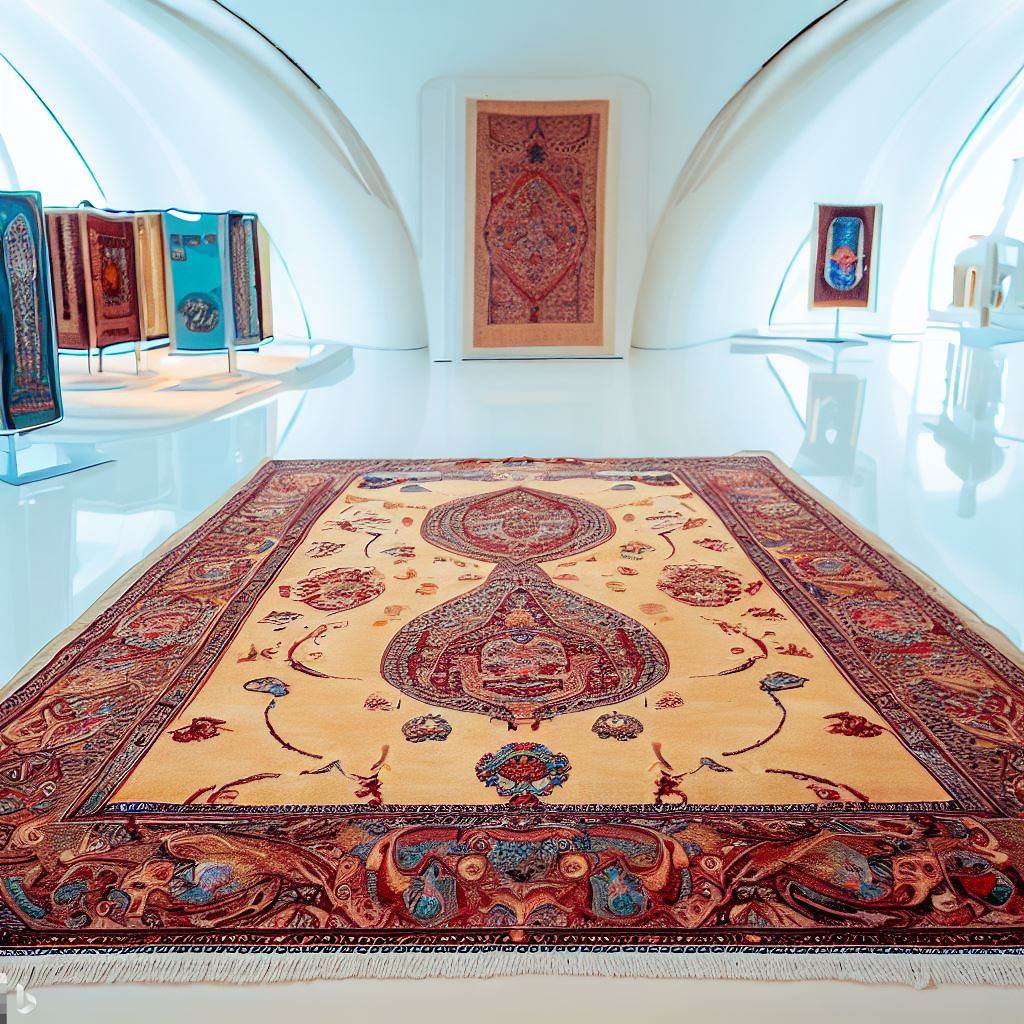Finding Inspiration in Culture: Ethnic Motifs in Handwoven Rugs
Traditional Motifs as Meaningful Symbols
Decorative motifs in handwoven rugs often encode deeper cultural meaning beyond ornamentation. Familiar symbols transmit heritage.
For instance, patterns in Navajo textiles reflect spiritual cosmology, while Tibetan motifs contain Buddhist iconography. Irish Aran knits carried clan identity and history through cable patterns.
West African Kente cloth features proverbs and adinkra symbols of Wisdom. Traditional Norwegian ryijy rugs displayed family crests. Repeated icons silently communicate to those who recognize their significance.
By honoring ancestral motifs, contemporary weavers maintain valuable cultural language. Their rugs continue guiding legends, fables, and proverbs into the future through every line and shape.
Reinterpreting Motifs in New Contexts
While respecting their heritage, weavers creatively reimagine traditional rug motifs using modern materials and layouts. Evolution uplifts traditions.
For instance, a Kabyle floral pattern could get rendered in minimalist graphic style on a linen kilim. Or Andean geometric alpaca motifs might inspire screenprinted upholstery.
Weavers might simplify complex regional emblems for beginner-friendly kits celebrating identity. Combining multiple cultural symbols in one piece highlights interconnectedness.
Through joy and skill, weavers send heritage motifs forth into new forms that sustain their spirit. Their rugs become bridges across generations and communities linked by the language of thread and yarn.
Abstracting Traditional References
Subtly integrating abstract allusions to meaningful ethnic patterns and symbols allows heritage to permeate contemporary weaving projects. Echoes sustain legacy.
For instance, a rug’scolor scheme could reference Peruvian textile hues without directly reproducing designs. Oblique geometrics faintly reflect Ndebele mural painting without imitation.
Deep red and black kilim motifs resonate with the palette of ancient Bulgarian costumes and ceramics. Improvised wavy lines capture the spirit of Maori woodcarving without presumption.
Through artful ambiguity, abstract references allow heritage to gracefully inspire new works. Weavers circumvent appropriation by distilling cultural touchstones into original expressions.
Weaving in Family Stories and Oral Traditions
Rug patterns pass down family histories, cultural myths, and cherished oral traditions through generations. Motifs give voice to memories.
A grandmother’s embroidered curtains find new form in repurposed fabric strips on her granddaughter’s rag rug. Totem animals recurring in songlines inspire native weavers.
Important dates, marriages, migrations, and inherited wisdoms get memorialized through symbolic imagery on tapestries. Legendary epics and parables emerge through fiber.
Weaving ancestral narratives makes rug motifs resonate deeply as constructed stories honoring those who came before. The threads spin old tales forward into the future through diligent devoted hands.
Portraying Daily Life and Celebrations
Scenes of quotidian routines and special occasions woven into rug panoramas provide glimpses into cultural and family heritage. Textiles illuminate lived experience.
Navajo weavings illustrate horses and farms of homesteads. Bedouin camel motifs reference nomadic existence in the desert. Andean wedding tapestries depict matrimony customs.
Rural cottage rugs feature roads and rivers winding past village landmarks. Vignettes from harvest bonfires, births, and weddings narrate communal memories.
Depicting familiar vistas, activities, and milestones weaves cultural identity and personal history into tangible heirlooms. Rugs embroider intimate memories through images and symbols holding layered significance.
Weaving Tales From Mythology and Folklore
Rug motifs inspired by regional myths and folklore transmit moral lessons and cosmology foundations underlying many cultures. Fantasy creatures become mnemonic devices.
Persian hunters and beasts fables get woven into dramatic tableau rugs. Celtic knotwork encodes Druidic nature tales and mysticism. Guatemalan animals represent Mayan creation stories.
Supernatural characters from epics are rendered with vibrant contrast. Mystical patterns reference sacred geometry. Celestial symbols depict deities governing astrology and agriculture.
Turning allegorical tales and mystical teachings into rug art preserves heritage worldviews. Weavers uphold ancient wisdom transmitting guidance through generations.
Protecting Sacred Imagery Through Cultural Sensitivity
Appropriating imagery with deep religious or ritual significance risks offense. Weavers ensure respect through collaboration and consent. Sensitivity matters.
Seeking context and permission allows adaptation to celebrate, rather than exploit, meaningful symbols. Foregoing restricted images concentrates on shared universal motifs. Guidance prevents misuse.
Transformative use that uplifts marginalized voices may justify integrating sacred symbols with care. But commercial production without consultation offends. DiscretionElevates collaboration.
By focusing on common archetypes and iconography, weavers thoughtfully avoid appropriating sacred imagery. Community guidance and context prevent harmful erasure of boundaries shielding threatened heritage.
Weaving to Uplift and Connect Marginalized Voices
For historically suppressed groups, weaving offers a powerful medium for celebrating identity, reclaiming space, and sharing truths. Textiles empower.
Native American weavers assert sovereignty and cosmology through pictorial rugs and tapestries depicting their perspectives. LGBTQ+ makers weave their resilience and pride into every fiber.
Enslaved artisans wove maps, symbols, and songs into quilts and cloth guiding escapes toward freedom. Women depict feminist narratives centuries censored from male histories.
When marginalized hands pick up needles and shuttles, every knot and row becomes an act of reclamation. Their rugs braid diverse voices into society’s tapestry on their own terms through devotion and skill.
Honoring Cross-Cultural Exchange Throughout History
Rug weaving traditions worldwide reveal rich historical intersections and exchanges across cultures through migrated techniques, materials, and aesthetics. Common threads underlie diversity.
Trade spread knowledge of cochineal and indigo dyes along trade routes. Islam’s reach dispersed geometric knots from Morocco to Indonesia. Colonial ships exported embroidery.
Transplanted communities blended heritage patterns with local textiles. Styles evolved in situ responding to new landscapes. Shared human impulse toward beauty and meaning persists.
By studying rug motifs as living maps of creativity crisscrossing cultures, weavers gain gratitude for our collective inheritance. Each handwoven work stitches shared humanity closer together.
The symbolism, stories, and heritage encoded in global rug motifs offer 21st century weavers an infinite well of inspiration to draw from with care, creativity, and reverence. Tradition remains alive only when adapted by new hands guided by ancestral patterns that poetically speak across borders and eras. When approached thoughtfully as the repositories of wisdom they are, diverse cultural textile traditions illuminate fresh pathways forward threaded by ancient continuity.
